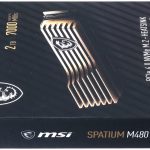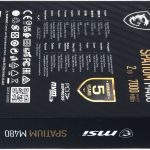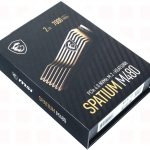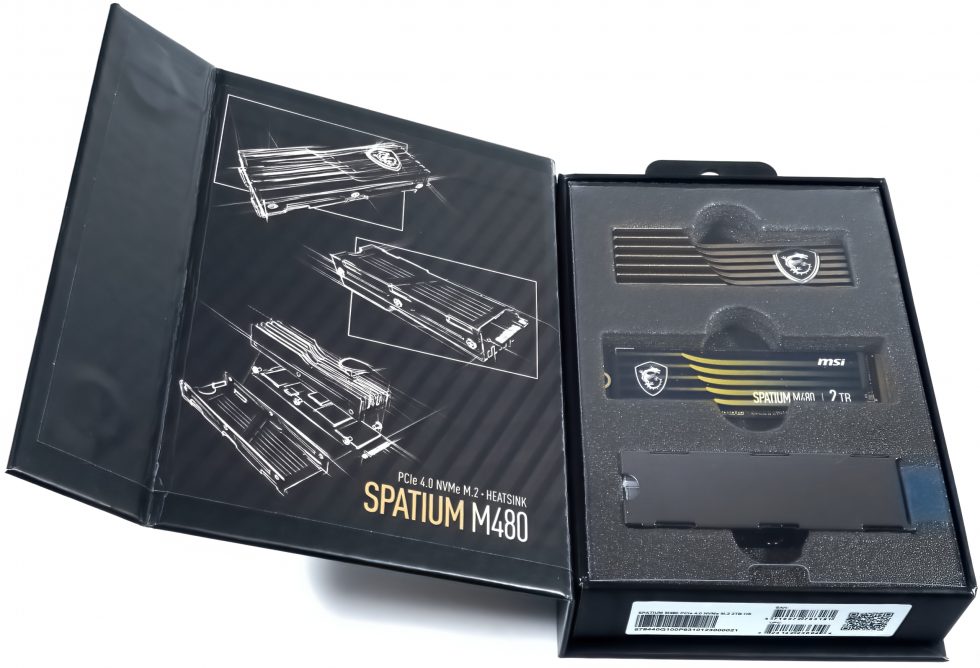Most major hardware vendors are adding fast SSDs to their portfolios, so MSI’s SPATIUM lineup is only logical. With the new SPATIUM M480 you also really let it rip, because with the Phison PS5018-E18 a quite new and fast controller for the 2 TB NAND memory is used, consisting of 512 GB modules in the form of the Micron B27B 96L TLC.
MSI advertises this SSD, just like almost all other manufacturers, with a “dynamic pSLC cache”, which I want and need to say a few words about in the course of the article for a better understanding. But back to the SSD, as the top-of-the-line 2TB model announced with an MSRP of $439 is a pretty interesting affair that also comes in 500GB and 1TB capacities. Well, unfortunately not for everyone, because it is not quite so cheap after all.
Unboxing, accessories and assembly
MSI packages the SSD and optional cooling block separately, which is a clever idea per se. Those who trust the motherboard’s M.2 cooler more or prefer to use it due to space issues, simply leave out the cooling block. The rest screw it on and are happy about a quite acceptable cooling performance.
So in the end, it is purely a question of taste and technical necessities which variant you choose. Both are feasible. And since the cooler is nothing proprietary, it can be used for other SSDs as well.
MSI warns of voiding the warranty if you remove the sticker, but temperatures are significantly lower without the sticker when in direct contact with the thermal pads of the optional cooling block or M.2 slot cooler. Tip from me: warm it up with a hair dryer, carefully peel it off and stick it on the plastic insert of the packaging, after you have the sticker let it cool down a bit. It works just as well the other way around.
For a better overview I have now the data sheet for you, before I defoliate the SSD on the following page and analyze the technology including dynamic pSLC:
Datasheet







































15 Antworten
Kommentar
Lade neue Kommentare
Veteran
Urgestein
Urgestein
Urgestein
Urgestein
Urgestein
Urgestein
1
Urgestein
Mitglied
1
Mitglied
1
Urgestein
Veteran
Alle Kommentare lesen unter igor´sLAB Community →